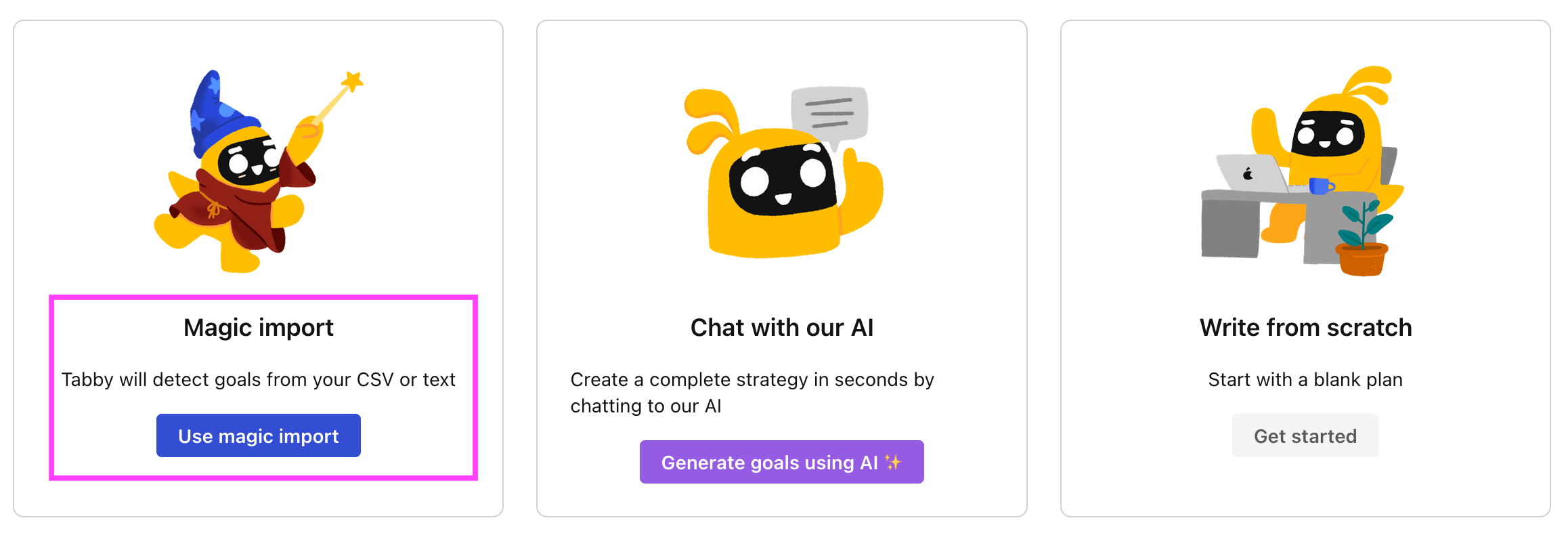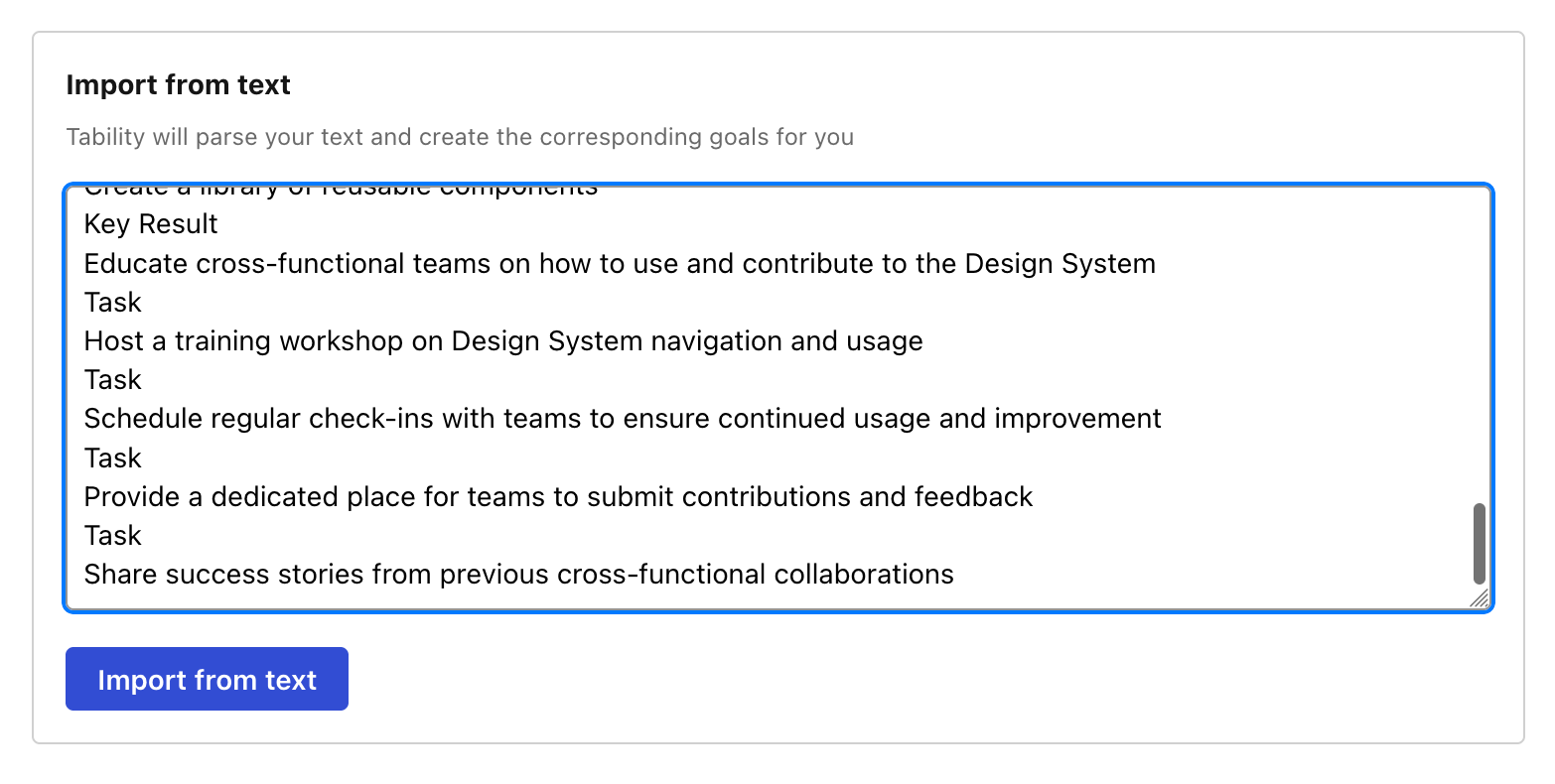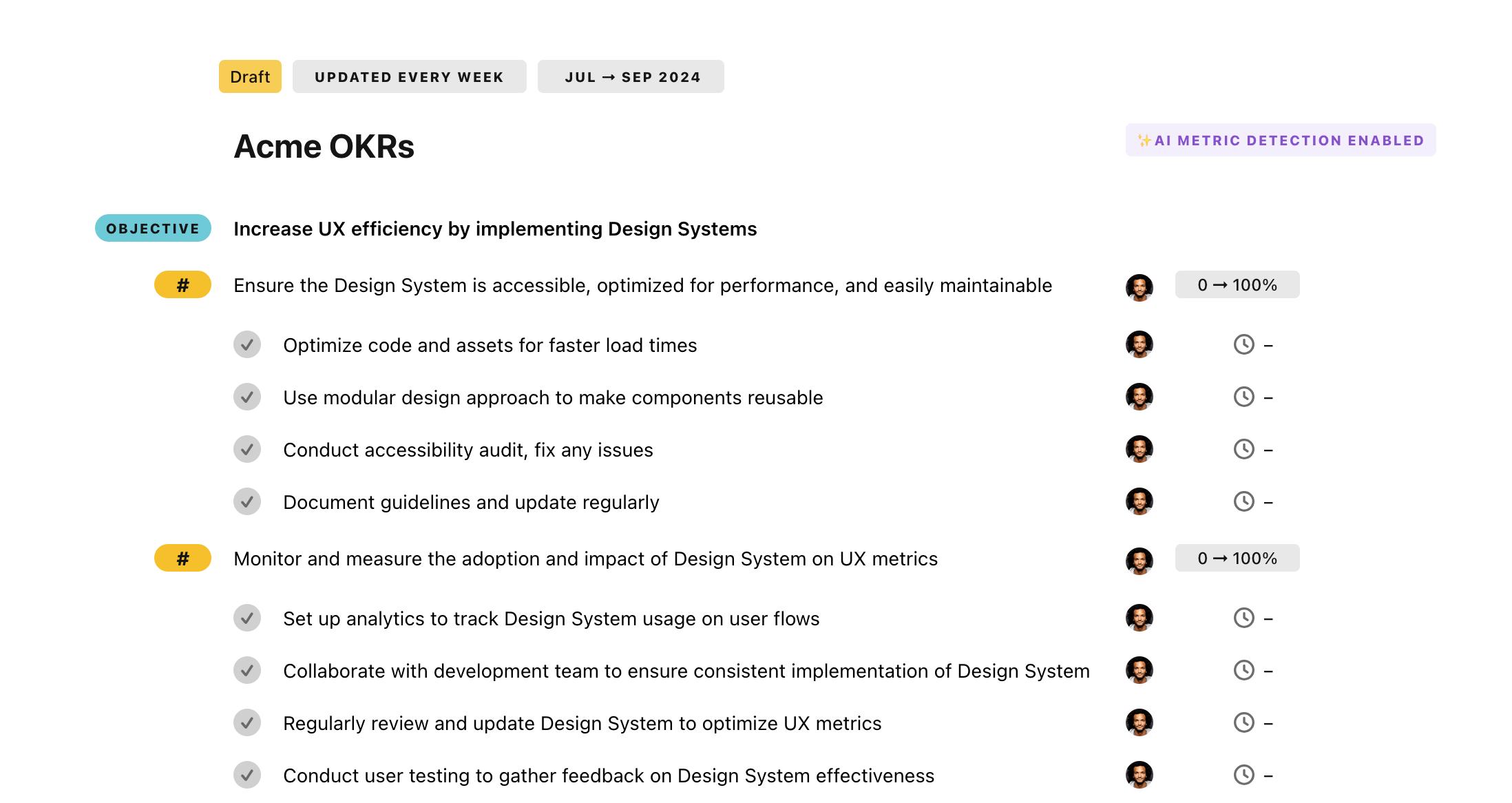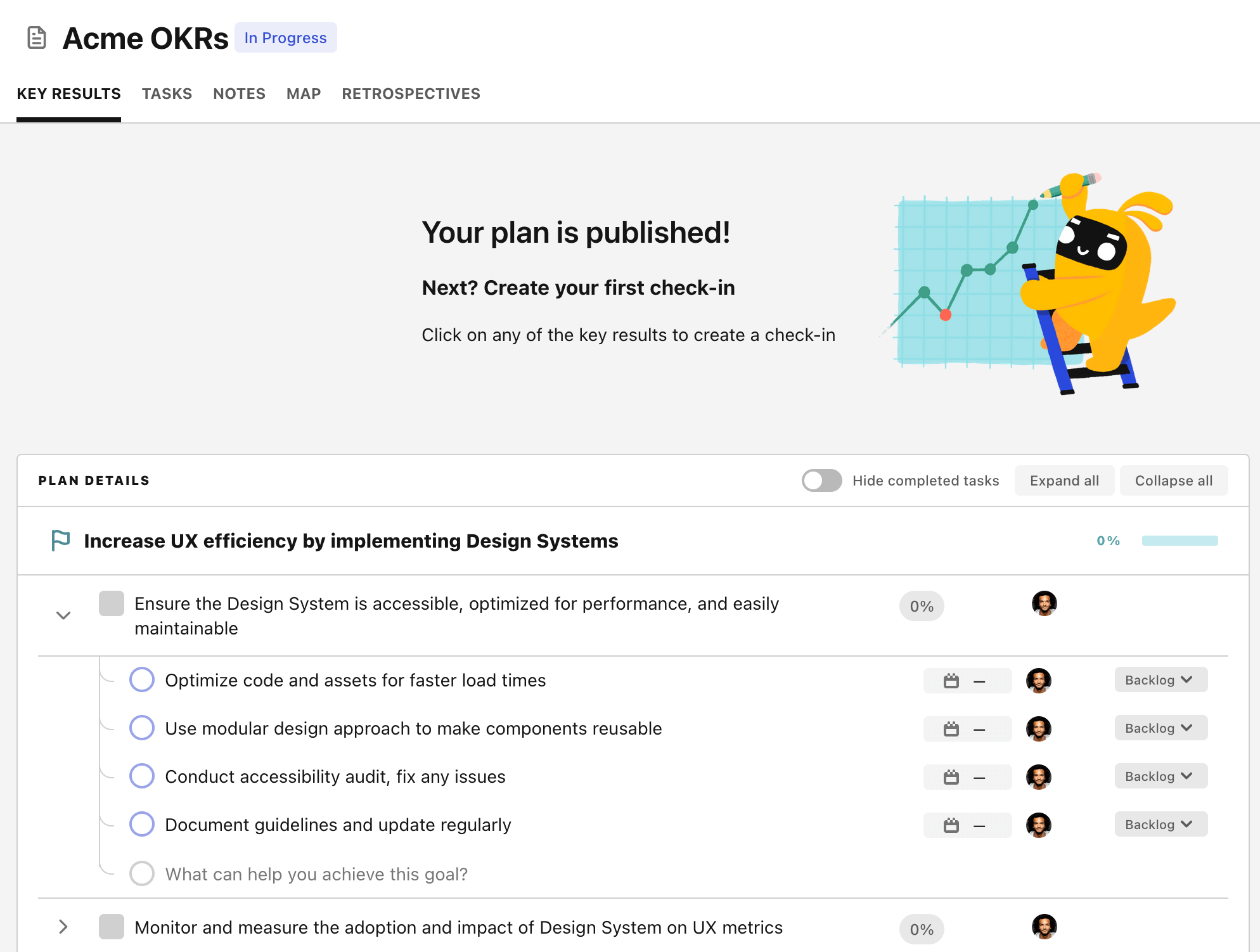OKR template to land and expand through product stickiness
Your OKR template
Whether you're coming at this from a customer success, growth, sales or a product perspective these KRs can be good indications of how well your product is sticking and growing with customers. Churn is something you should always be tracking and the most obvious indicator of stickiness. How many customers are leaving your product? Taking a deeper look at these accounts and finding out why people leave can be a huge advantage in finding product fit too.
ARPC(average revenue per customer) can be a good way of calculating how well your product is expanding within an org. By spreading to more users, it's an easy way to gain revenue organically vs. trying to sell a new account.
Some people are skeptical about NPS(Net promoter scores) as they can have skewed results. But more data the better, and even with skewed results, it can be a seamless way to get feedback and gauge general happiness.
ObjectiveLand and expand through product stickiness
KRReduce churn rate by 50%
KRDouble our ARPC(Average revenue per customer)
KRIncrease NPS rating by 10
KRImprove results of Onboarding survey by 25%
How to edit and track OKRs with Tability
You'll probably want to edit the examples in this post, and Tability is the perfect tool for it.
Tability is an AI-powered platform that helps teams set better goals, monitor execution, and get help to achieve their objectives faster.
With Tability you can:
- Use AI to draft a complete set of OKRs in seconds
- Connect your OKRs and team goals to your project
- Automate reporting with integrations and built-in dashboard
Instead of having to copy the content of the OKR examples in a doc or spreadsheet, you can use Tability’s magic importer to start using any of the examples in this page.
The import process can be done in seconds, allowing you to edit OKRs directly in a platform that knows how to manage and track goals.
Step 1. Sign up for a free Tability account
Go tohttps://tability.app/signup and create your account (it's free!)
Step 2. Create a plan
Follow the steps after your onboarding to create your first plan, you should get to a page that looks like the picture below.

Step 3. Use the magic importer
Click on Use magic import to open up the Magic Import modal.
Now, go back to the OKR examples, and click on Copy on the example that you’d like to use.

Paste the content in the text import section. Don’t worry about the formatting, Tability’s AI will be able to parse it!

Now, just click on Import from text and let the magic happen.

Once your example is in the plan editor, you will be able to:
- Edit the objectives, key results, and tasks
- Click on the target 0 → 100% to set better target
- Use the tips and the AI to refine your goals
Step 4. Publish your plan
Once you’re done editing, you can publish your plan to switch to the goal-tracking mode.

From there you will have access to all the features that will help you and your team save hours with OKR reporting.
- 10+ built-in dashboards to visualise progress on your goals
- Weekly reminders, data connectors, and smart notifications
- 9 views to map OKRs to strategic projects
- Strategy map to align teams at scale